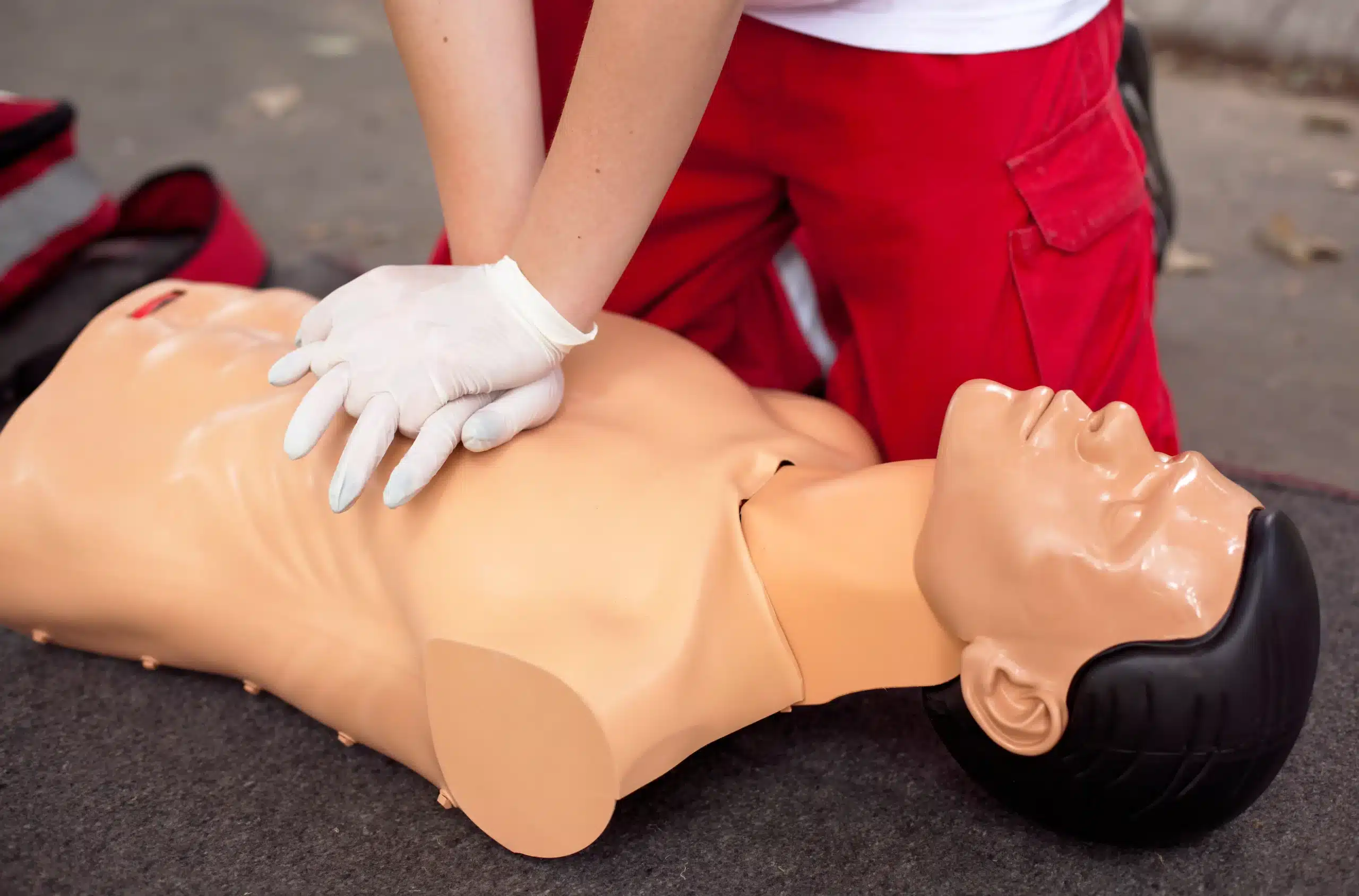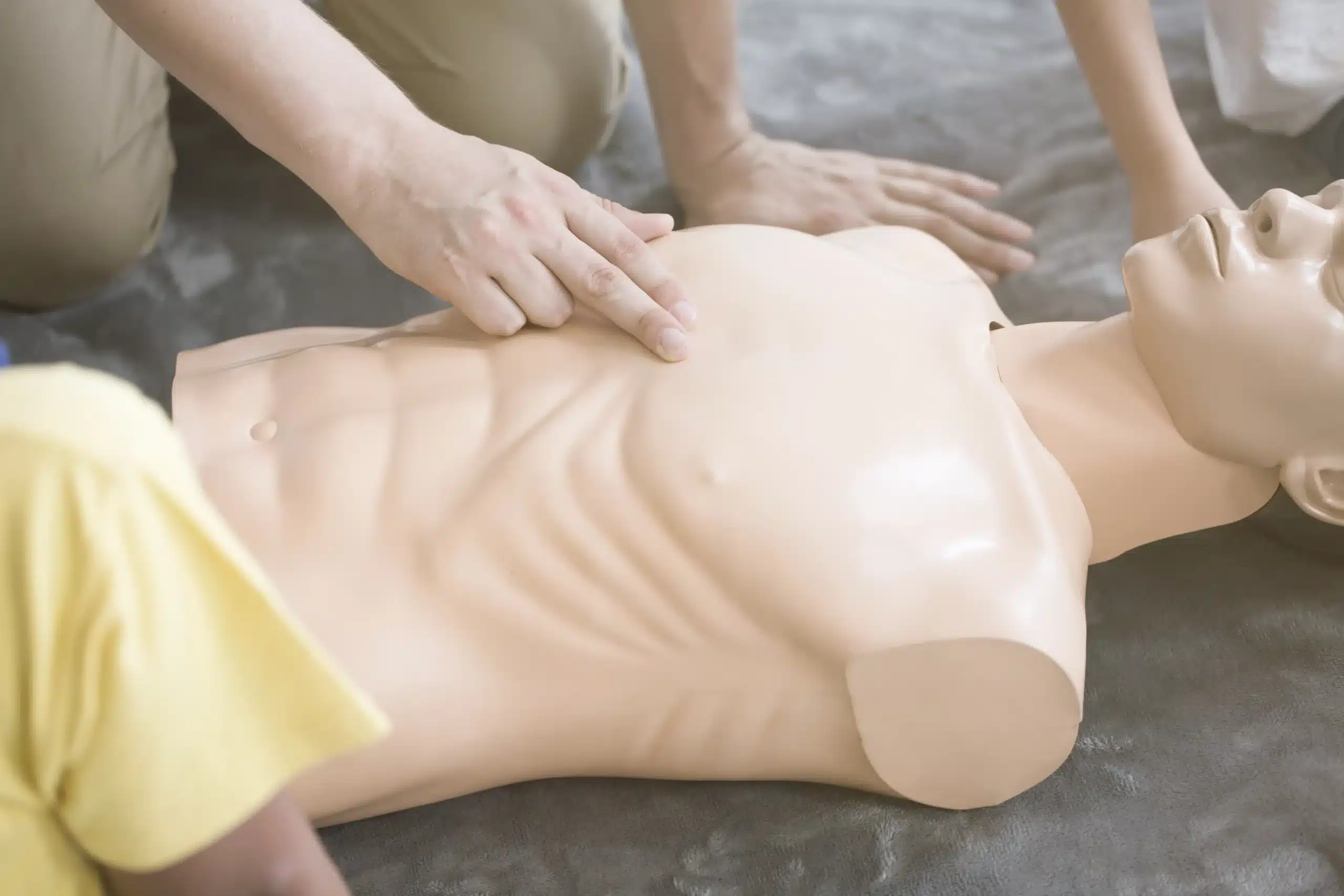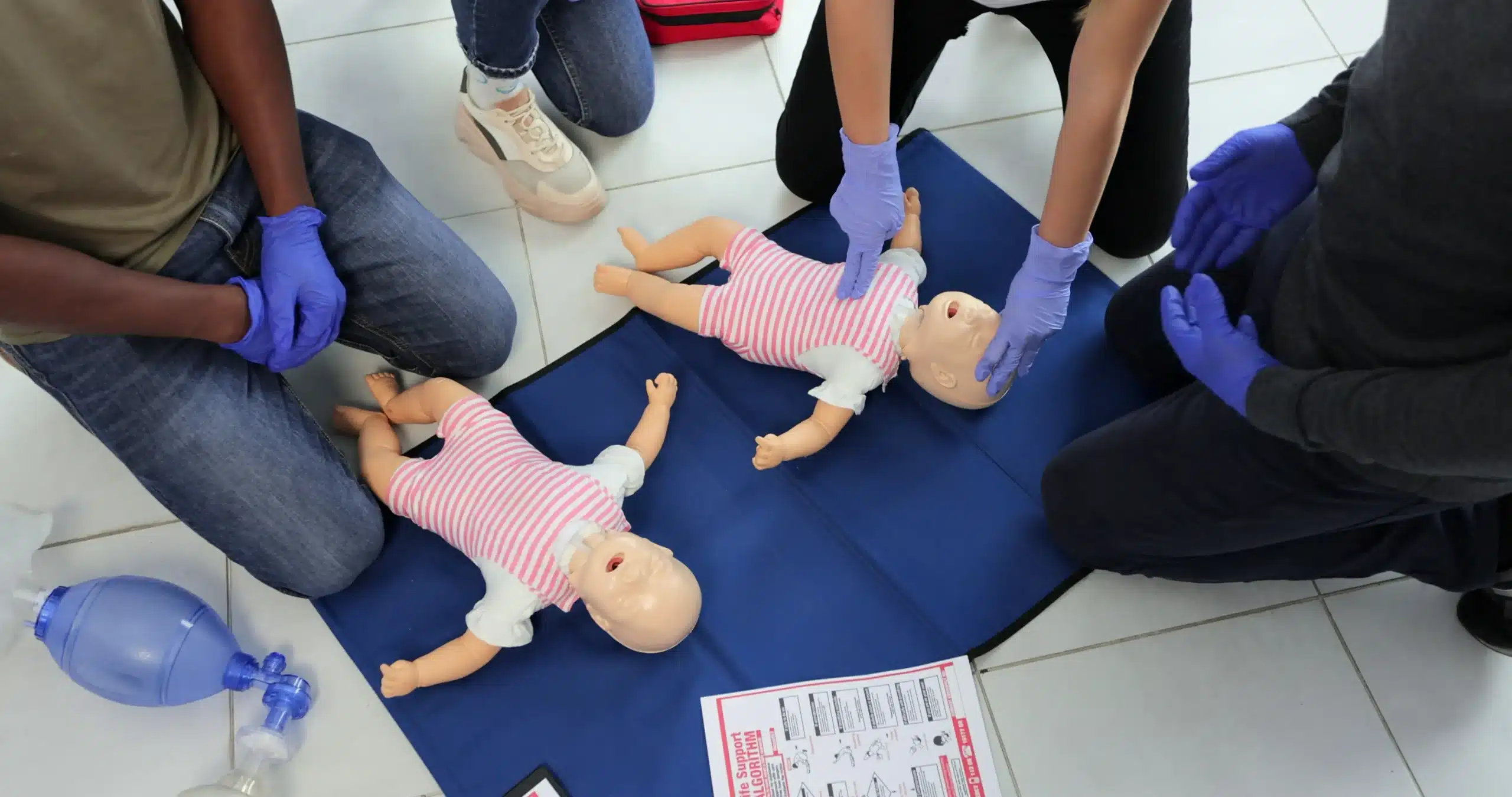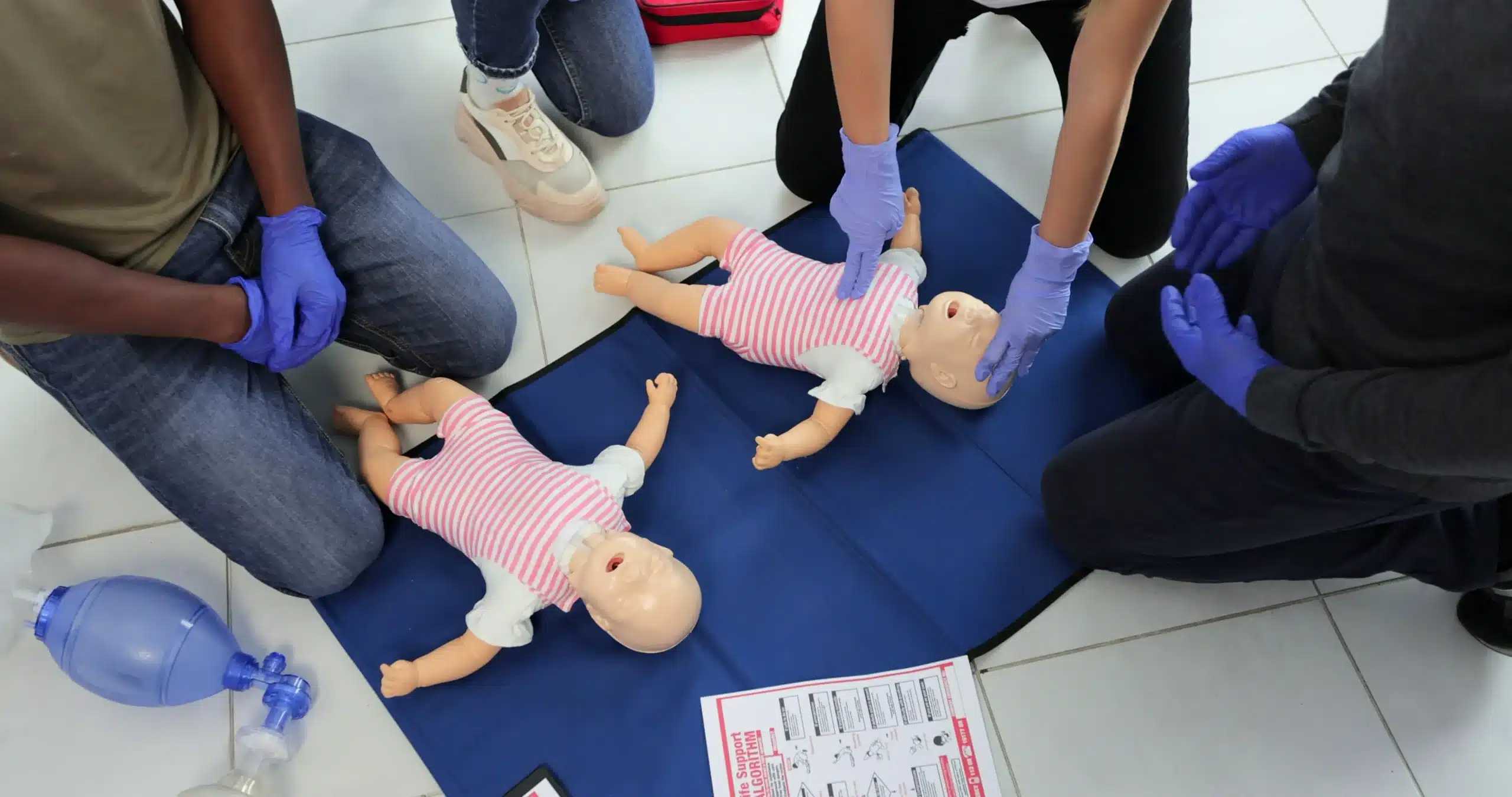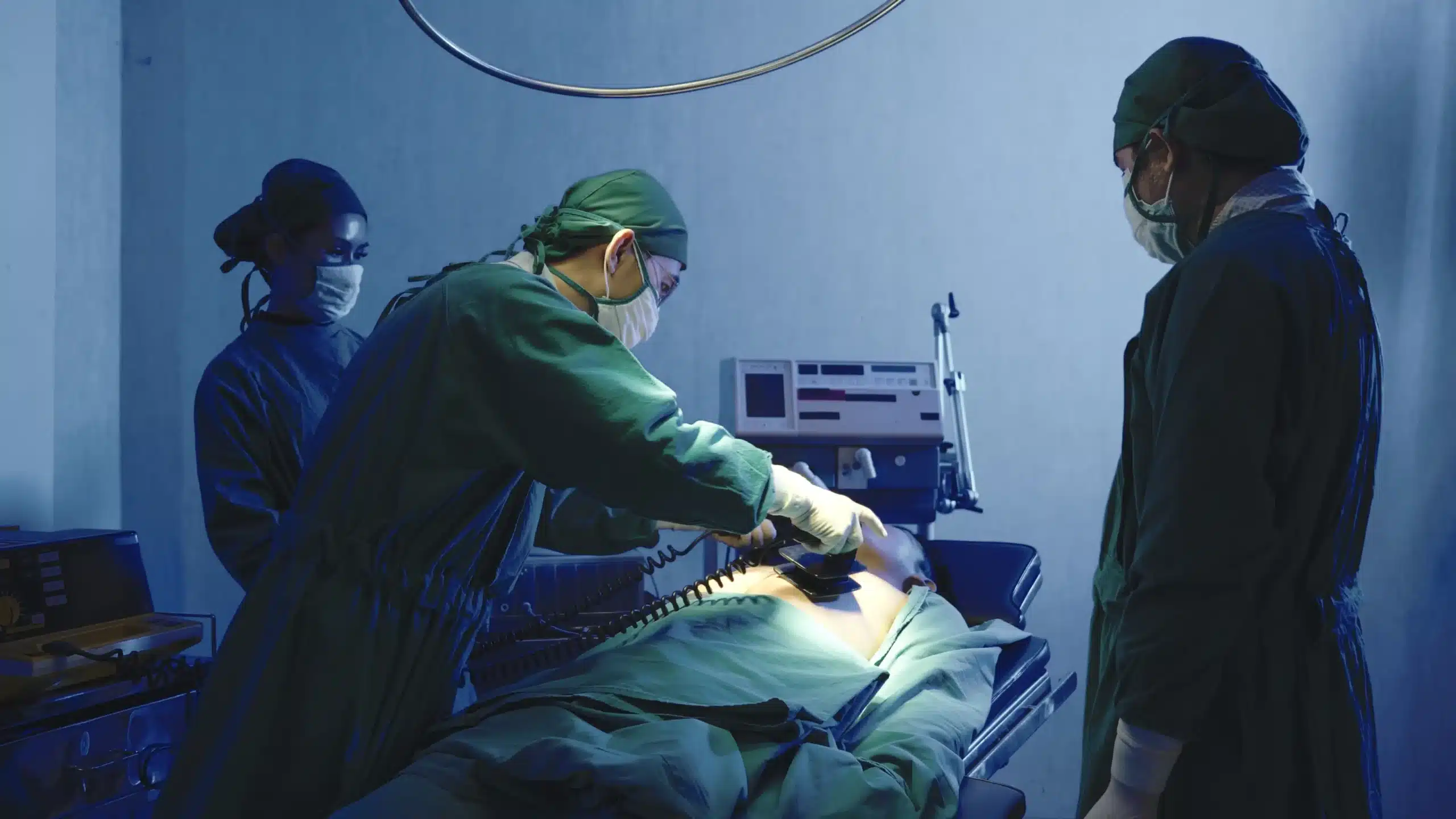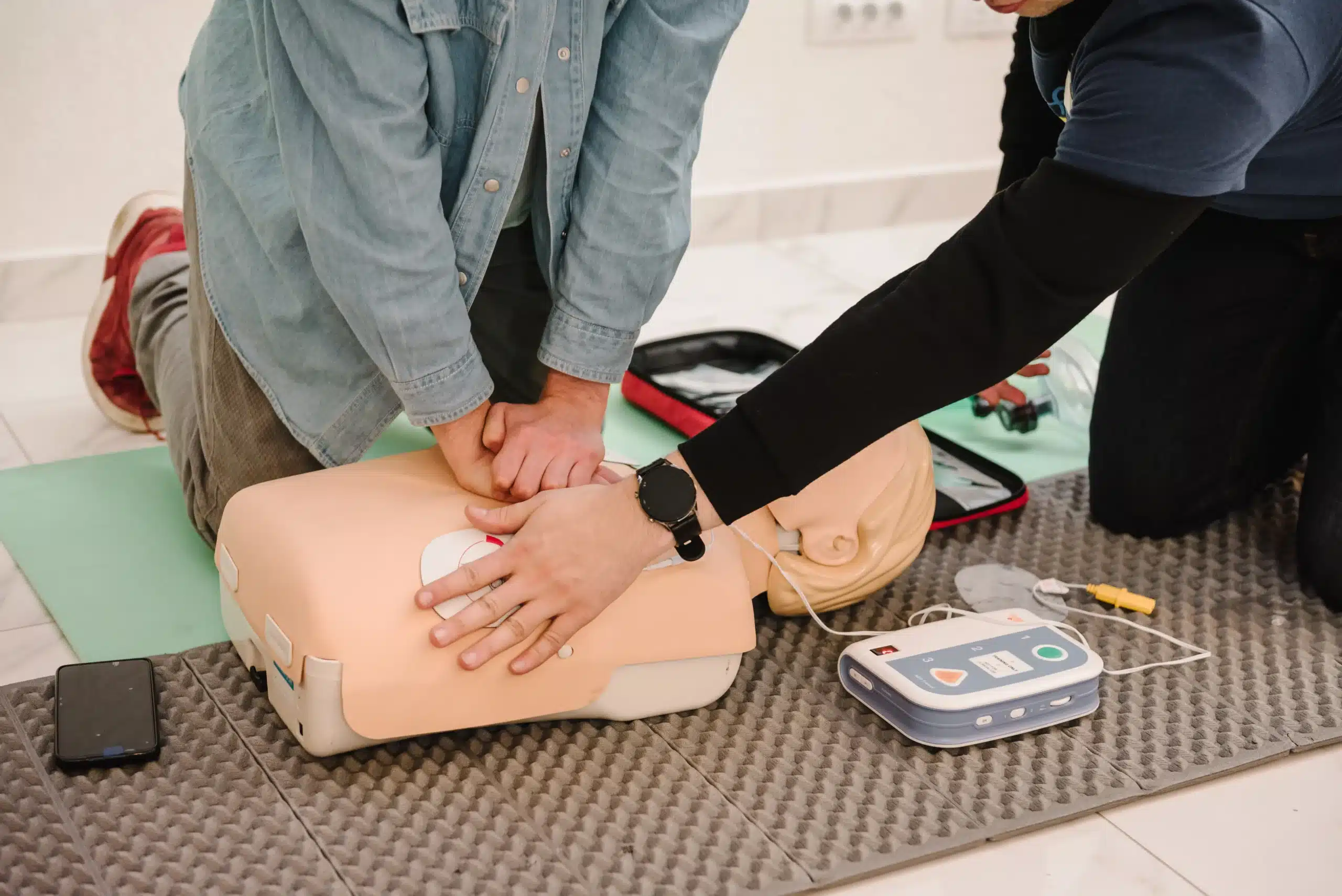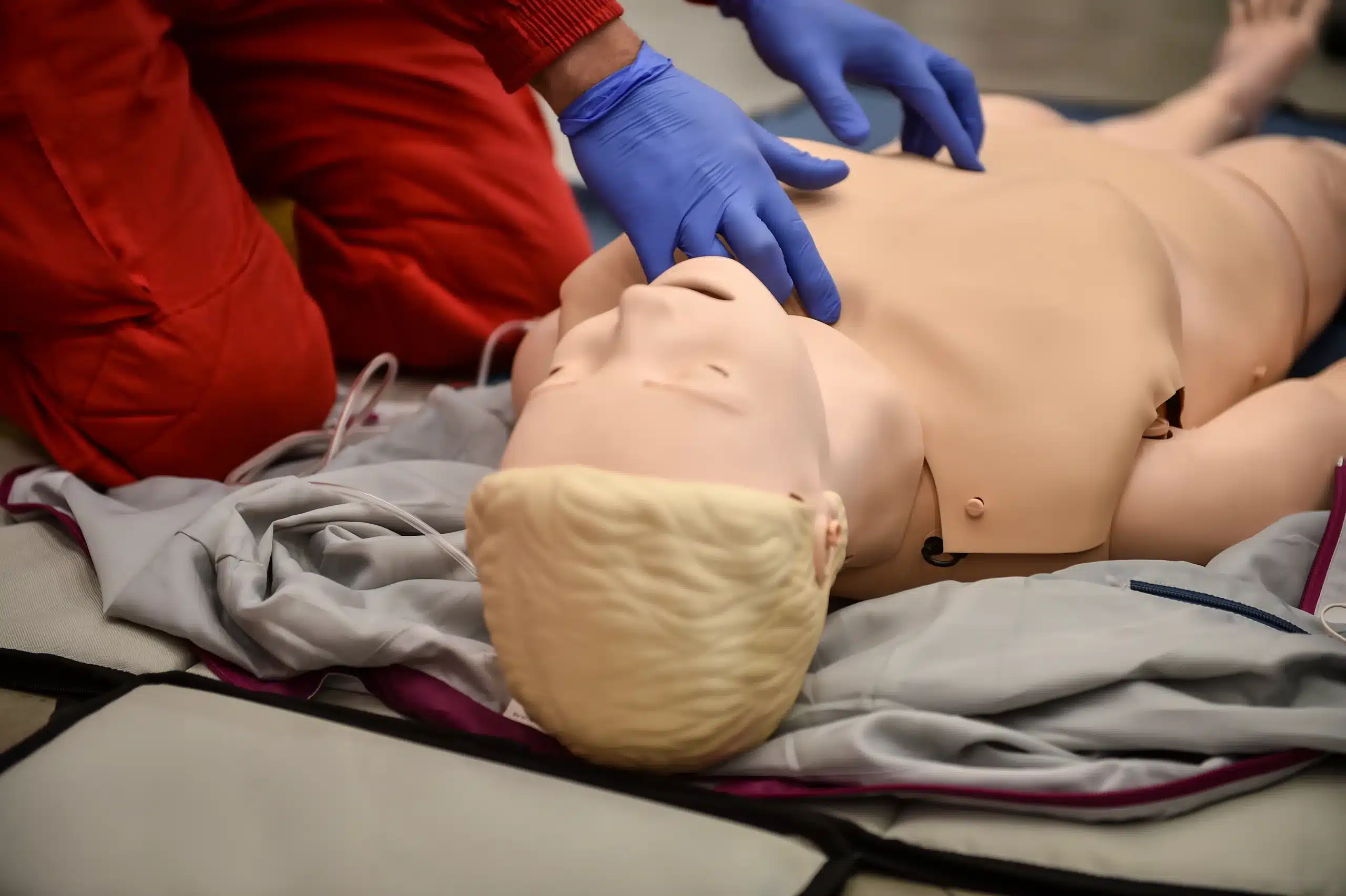Your BLS certification is more than just a credential—it’s a testament to your dedication to providing high-quality patient care. Staying current with your BLS recertification in Alameda is crucial for career advancement and maintaining your proficiency in life-saving techniques. This guide provides a practical overview of BLS recertification, covering everything from course content and requirements to finding the right training provider in Alameda. We’ll also discuss different learning formats, cost considerations, and common misconceptions, empowering you to make informed decisions about your recertification journey.
Key Takeaways
- BLS Recertification Keeps Your Skills Sharp: Regularly refreshing your BLS certification ensures you’re prepared to respond effectively in medical emergencies and demonstrates your commitment to high-quality patient care. Choose a course format—in-person, online, or hybrid—that fits your learning style.
- Find the Right Course in Alameda: Consider accreditation, instructor experience, and scheduling options when selecting a provider. AHA-compliant training centers like Safety Training Seminars offer convenient courses and same-day certification.
- Stay Certified, Stay Ahead: Maintaining your BLS certification benefits your career, ensures compliance with workplace standards, and most importantly, empowers you to make a real difference in critical situations. Remember to recertify every two years.
What is BLS Recertification?
BLS recertification is a refresher course for healthcare providers and other professionals who’ve already earned their Basic Life Support (BLS) certification. It keeps your skills sharp and your knowledge current, ensuring you can respond effectively in medical emergencies. Think of it as a tune-up for your lifesaving abilities. Recertification courses cover the same core content as initial BLS training but in a condensed format. You’ll review essential techniques like CPR, using an AED, and relieving choking.
Key Skills You’ll Learn
During your BLS recertification course, you’ll practice giving high-quality chest compressions and delivering rescue breaths—two cornerstones of effective CPR. The course also reinforces how to quickly assess a patient to determine if they need BLS. You’ll review the latest guidelines from the American Heart Association, ensuring your techniques align with best practices. Importantly, you’ll gain more confidence in handling emergency situations. This can make all the difference when every second counts.
Why Recertification Matters for Healthcare Professionals
For healthcare professionals, maintaining current BLS certification is often a job requirement. It demonstrates your commitment to providing high-quality patient care and ensures you comply with workplace standards. Regular recertification also keeps you informed about the latest advancements in emergency medical care. Beyond the professional benefits, BLS recertification empowers you to make a real difference. Knowing you have the skills to respond effectively in a crisis brings peace of mind and fosters a sense of teamwork among healthcare colleagues. It reinforces a culture of preparedness and collaboration, essential for any medical environment.
Top Alameda BLS Recertification Providers
Finding the right BLS recertification course can feel overwhelming, but it doesn’t have to be. This section breaks down the top providers in Alameda, so you can choose the best fit for your needs.
Safety Training Seminars
Safety Training Seminars, a woman-owned AHA Training Center, offers a range of courses, including BLS, ACLS, PALS, CPR, and First Aid. They focus on providing excellent customer service and offer same-day certification cards—a huge benefit for busy professionals. Learn more about their BLS course options.
American Heart Association
The American Heart Association (AHA) sets the standard for CPR and emergency cardiovascular care. While the AHA doesn’t directly offer courses, they authorize training centers like Safety Training Seminars to deliver their curriculum. This ensures your training aligns with the latest AHA guidelines. Safety Training Seminars is an AHA-certified training center in Alameda, offering courses in CPR, BLS, ACLS, and PALS.
Red Cross
The American Red Cross also provides BLS recertification courses, both online and in-person. Their program, designed for healthcare providers, equips professionals with the skills to respond effectively in emergencies. The Red Cross offers a convenient way to maintain your certification with flexible learning options.
Local Hospitals and Medical Centers
Many local hospitals and medical centers in Alameda offer BLS recertification courses, often using a blended learning approach that combines online coursework with in-person skills practice. Geared towards their own staff, these courses may also be open to the public. Contact your local hospital or medical center directly to inquire about their BLS recertification programs.
Course Formats and Flexibility
Finding the right BLS recertification course often comes down to format and scheduling. Thankfully, there are several options available to fit your learning style and busy life. Let’s break down the most common formats: in-person, online, and hybrid courses.
In-Person Training
Traditional in-person BLS recertification classes offer a structured, hands-on learning environment. These courses, often held at facilities like Safety Training Seminars in Alameda, provide direct interaction with certified instructors and the opportunity to practice skills with other healthcare professionals. This format is ideal for those who learn best through direct instruction and real-time feedback. Safety Training Seminars, an American Heart Association (AHA) Training Center, follows the latest AHA guidelines, ensuring you receive high-quality, up-to-date training. Because they offer BLS certification courses daily in Alameda, finding a class that fits your schedule is easy.
Online Options
For those with demanding schedules or limited access to physical classes, online BLS recertification courses offer a convenient alternative. The AHA provides various BLS renewal options, including online coursework, allowing you to learn at your own pace and from the comfort of your home. This format typically involves interactive modules, videos, and knowledge assessments to ensure comprehension of essential BLS principles.
Hybrid Courses
Combining the best of both worlds, hybrid BLS recertification courses blend online learning with in-person skills practice. You’ll complete the cognitive portion of the course online, then attend a shorter, hands-on session to demonstrate your skills and receive feedback from an instructor. Many BLS training courses now offer this blended learning approach. HeartCode BLS is a popular example, providing the flexibility of online coursework combined with a hands-on skills session to earn your AHA BLS certification. This format is a great option for those who appreciate the convenience of online learning but also value the hands-on practice and interaction with an instructor.
Cost of BLS Recertification
Knowing the cost of BLS recertification helps you budget and find the best value. Let’s break down the typical expenses and explore ways to save.
Average Price Range
BLS recertification courses in Alameda, CA usually cost between $100 and $150. This price typically covers online coursework, the skills test, and your certification card. Safety Training Seminars, for example, offers BLS courses for around $120.
Factors Affecting Cost
Several things can influence the total cost. The type of certification you need (CPR/AED, BLS, ACLS, PALS, etc.) plays a big role. Whether you choose in-person training or a blended learning format also affects the price. The training provider themselves will also have their own pricing structure. All of these elements combined determine the final cost of your course. More advanced certifications like ACLS and PALS naturally come with a higher price tag.
Group Discounts and Package Deals
If you’re coordinating training for a group, look for group discounts. Many providers, including Safety Training Seminars, offer reduced rates for multiple participants, making it a smart choice for businesses or organizations. This can be a more economical way to ensure everyone on your team is certified. You might also find package deals that combine different certifications, potentially saving you money compared to taking each course individually. Check with your chosen provider to see what options are available.
Prerequisites and Requirements
Before signing up for your BLS recertification course in Alameda, it’s helpful to understand the requirements. Knowing what to expect makes the process smoother and ensures you’re prepared for class.
Current or Expired Certification
You’ll need a current or recently expired American Heart Association BLS Provider card to take a BLS renewal course. If your card is expired, make sure it hasn’t been expired for more than 30 days. This requirement helps ensure you’re up-to-date on the latest life-saving practices and guidelines. Check out our BLS renewal courses in Alameda for more information.
Required Documentation
When you come to class, bring your current or expired BLS Provider card with you. This allows the instructor to verify your previous certification. Digital certificates are perfectly acceptable.
Age Requirements
While there isn’t a strict age requirement for BLS certification or recertification, these courses are generally geared towards adults. If you have questions about age requirements for our Alameda courses, reach out to us directly, or contact your chosen training center. We’re happy to help!
What to Expect During the Course
Knowing what to expect can help you feel prepared and confident on the day of your BLS recertification course. Here’s a breakdown of a typical course:
Course Content Overview
BLS recertification courses cover core life-saving skills for healthcare providers. You’ll review how to recognize and respond to life-threatening emergencies, including cardiac arrest, respiratory distress, and obstructed airways. The course content often includes high-quality CPR for adults, children, and infants, proper use of an automated external defibrillator (AED), and effective team dynamics during resuscitation. For a more detailed overview of BLS certification, check out this helpful guide.
Hands-On Practice
Hands-on practice is a crucial part of BLS recertification. Many courses use a blended learning format, combining online coursework with in-person skills sessions. You’ll work with manikins to practice essential skills, giving you the confidence to perform them correctly in a real emergency. This practical experience is invaluable for reinforcing the techniques you learn. For more information about hands-on BLS training, take a look at this comprehensive guide.
Assessment and Certification
At the end of the course, there’s typically a written exam and a practical skills test. Once you successfully complete both, you’ll receive your new BLS certification card. Many providers, like Safety Training Seminars, offer same-day certification. This card is typically valid for two years, after which you’ll need to recertify. For more information on BLS renewal and what to expect, review this resource.
Choosing the Right BLS Recertification Course
Finding the right BLS recertification course can feel overwhelming with so many options. But by focusing on a few key factors, you can narrow down your choices and select a program that best fits your needs and helps you confidently maintain your lifesaving skills.
Accreditation and Recognition
First things first, make sure the course you choose is accredited by a reputable organization like the American Heart Association (AHA). Safety Training Seminars, for example, is an AHA Training Center, meaning their courses adhere to the latest AHA guidelines and will be widely accepted. This is crucial for ensuring your certification is valid and meets employer requirements.
Instructor Qualifications
Experienced and knowledgeable instructors are essential for a high-quality learning experience. Look for courses taught by certified instructors with a strong background in healthcare and a passion for teaching. Safety Training Seminars, a woman-owned business, emphasizes this commitment to providing excellent instruction for their BLS, ACLS, and PALS courses.
Course Duration and Schedule
Juggling work, family, and other commitments can make finding time for recertification challenging. Consider the course duration and schedule when making your decision. Safety Training Seminars offers flexible scheduling options to help you fit the course into your busy life. You can find more information on their website about BLS training in Alameda.
Immediate Certification Options
For many professionals, receiving their certification card quickly is a must. Ask about immediate certification options when selecting a course. Safety Training Seminars prioritizes customer service and provides same-day certification cards—a major benefit for busy professionals. They also offer a low price guarantee and group discounts.
Benefits of Staying BLS Certified
Staying current with your Basic Life Support (BLS) certification offers numerous advantages, impacting everything from career prospects to patient outcomes. It’s not just a box to check—it’s a commitment to providing the highest quality of care and ensuring your own professional development.
Advance Your Career
BLS certification is often a prerequisite for many healthcare roles and a key factor in career advancement. Whether you’re a medical student, nurse, physician, or other healthcare provider, maintaining your BLS certification demonstrates your dedication to professional growth and can open doors to new opportunities. It signals to employers that you possess essential life-saving skills and are committed to staying updated in your field. For those in other professions like education, childcare, or fitness, BLS certification adds value and can give you a competitive edge.
Improve Patient Care
BLS training equips you with the skills to assess and respond effectively to medical emergencies. From recognizing the signs of cardiac arrest to performing high-quality CPR and using an AED, BLS-certified professionals play a vital role in improving patient outcomes. Regular BLS recertification ensures you stay sharp and confident in your abilities, allowing you to deliver the best possible care during critical moments. This proficiency can significantly impact a patient’s chances of survival and recovery.
Ensure Employer Compliance
Many healthcare facilities and organizations require their employees to maintain current BLS certification. This is not just a matter of policy but a crucial step in ensuring a safe and prepared work environment. By staying certified, you help your employer meet regulatory requirements and demonstrate a commitment to patient safety. This proactive approach minimizes liability and fosters a culture of preparedness. Group discounts are often available for businesses looking to certify or recertify their staff.
Build Confidence in Emergencies
Knowing you can effectively respond in a medical crisis provides invaluable peace of mind. BLS certification empowers you with the knowledge and skills to act decisively and confidently when faced with an emergency. This confidence translates to quicker reaction times, more effective interventions, and ultimately, better outcomes for those in need. Regular practice and recertification reinforce these skills, reducing hesitation and ensuring you’re always ready to provide assistance.
Common BLS Recertification Misconceptions
It’s easy to get confused about BLS recertification, especially with so much information online. Let’s clear up some common misconceptions so you can stay on top of your credentials.
How Long Certification Lasts
One common misconception is how long your BLS certification remains valid. Your BLS certification is valid for two years. It’s important to remember that the previous 30-day grace period after expiration is no longer in effect. Once your certification expires, you’ll need to retake the entire course, not just a refresher. So, mark your calendar and plan to recertify before it lapses.
Initial vs. Recertification Courses
Many people are confused about the difference between initial BLS certification and recertification courses. The key difference lies in your experience level. Initial courses are designed for first-time learners, while BLS recertification courses are for those who already hold a valid (or recently expired) certification and possess a foundational understanding of BLS skills. Recertification courses often focus on reinforcing existing knowledge and updating any changes in guidelines.
Quality of Online Training
With the rise of online learning, many wonder about the validity of online BLS recertification. Online BLS renewal courses are perfectly acceptable if they come from a recognized provider like the American Heart Association or the American Red Cross. Just be sure to choose a reputable provider that offers high-quality instruction and meets the AHA’s standards. Safety Training Seminars offers convenient online options that fulfill these requirements.
Maintaining Skills Over Time
Even with a valid certification, CPR skills can fade over time. Regular practice and refresher exercises are crucial for maintaining proficiency and responding effectively in real-life emergencies. The Red Cross offers a free mobile app to help you stay updated on the latest guidelines and practice your skills between courses. Consider incorporating these tools into your routine to keep your skills sharp.
Maintain Your BLS Certification
Keeping your BLS certification current is crucial for any healthcare professional. It ensures you’re always prepared to provide high-quality care in emergencies. This section covers everything you need to know about maintaining your BLS skills and knowledge.
How Often to Renew
BLS certification is valid for two years. You must renew your certification every two years to stay current. There’s no grace period; once your certification lapses, you’ll have to retake the entire course. Plan and schedule your BLS renewal before your current certification expires to avoid any gaps in your qualifications.
Continuing Education Options
Staying up-to-date with the latest BLS guidelines and techniques is easy, thanks to a variety of continuing education options. The American Heart Association offers several BLS renewal pathways, including convenient online courses and traditional in-person classes. Many providers also offer blended learning, which combines online modules with hands-on skill practice. This flexible approach allows you to learn at your own pace while still receiving essential practical experience. Safety Training Seminars offers several formats to fit your learning style and schedule. Check our website for course options to find the best fit.
Related Articles
- BLS Certification: Career Benefits for Healthcare Professionals – Alameda CPR Classes
- BLS Certification in Alameda for Healthcare Providers – Alameda CPR Classes
- BLS Certification Alameda: Your First Step to Saving Lives – Alameda CPR Classes
- BLS Renewal in Berkeley: Your Complete Guide – Alameda CPR Classes
- BLS Certification: Build Confidence in Emergency Situations – Alameda CPR Classes
Frequently Asked Questions
How long is my BLS certification valid? BLS certification is valid for two years. Plan to recertify before your current certification expires to avoid any lapse in your credentials.
What’s the difference between BLS certification and recertification? Initial BLS certification courses are for those learning these skills for the first time. Recertification courses are designed for healthcare providers who already hold a BLS certification and need to renew it. Recertification courses are typically shorter and focus on reinforcing existing knowledge and covering any updates to the guidelines.
Can I renew my BLS certification online? Yes, you can renew your BLS certification online through a reputable provider like the American Heart Association or the American Red Cross. Make sure the online course you choose meets the AHA’s standards and provides high-quality instruction.
Where can I find BLS recertification courses in Alameda? Several organizations in Alameda offer BLS recertification courses, including Safety Training Seminars, local hospitals, and medical centers. Check their websites or contact them directly to find a course that fits your schedule and learning preferences.
Why is it important to stay current with my BLS certification? Staying current with your BLS certification is essential for several reasons. It ensures you have the most up-to-date skills to provide high-quality patient care, meets employer requirements, and can even open doors to career advancement. It also gives you the confidence to respond effectively in medical emergencies, knowing you have the skills to make a difference.


